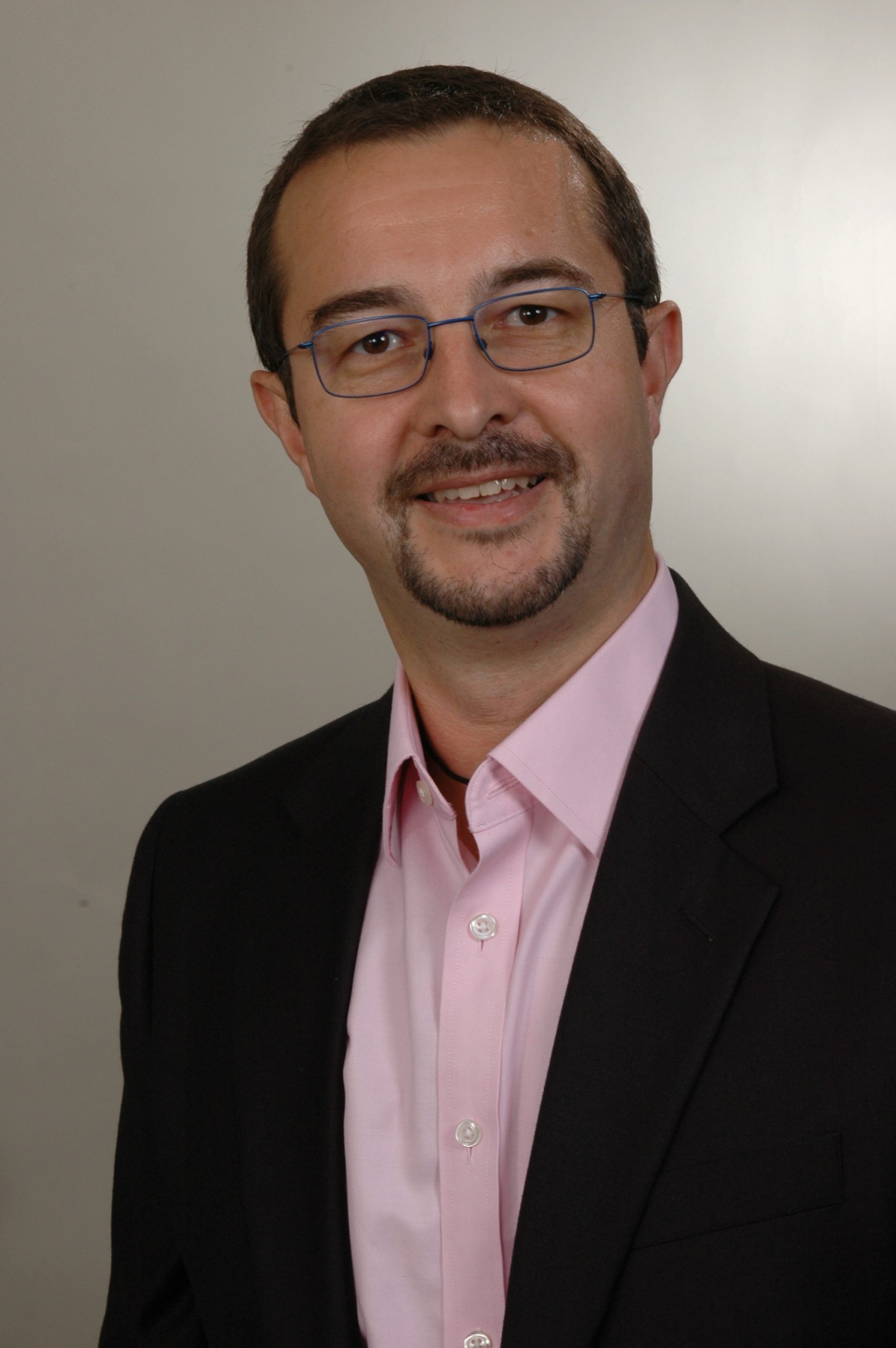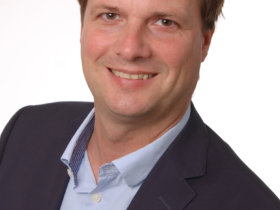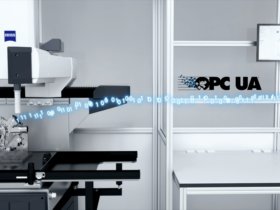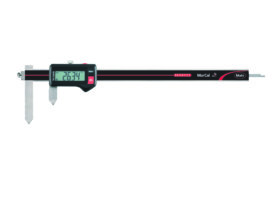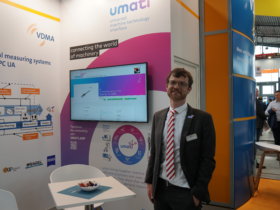Open data communication revolutionizing measurement technology
Measurement technology plays a key role in Industry 4.0. Its digital transformation stands and falls with the OPC UA GMS (geometric measuring systems) interface, with which a working group of the German Engineering Federation (VDMA) is clearing the way for manufacturer-neutral communication in measuring.
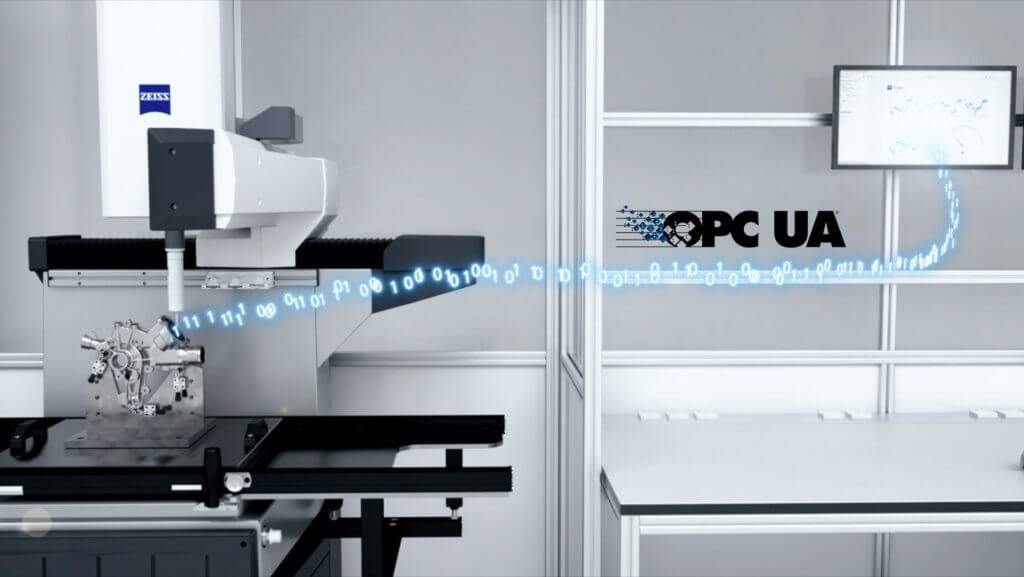
Measurement technology is playing a major role in Industry 4.0. A crucial factor for the success of the digital transformation is the OPC UA GMS (geometric measuring systems) interface, which a working group of the Mechanical Engineering Industry Association (VDMA) hopes will pave the way for vendor-neutral communication in measuring. Three exhibitors at EMO Hannover – Mahr, Wenzel and Zeiss – explain how they intend to improve metrology workflows through their involvement in this group.
Quality is decided by the precision of the instrument, Henry Ford once claimed. The automotive pioneer who, together with Frederick Winslow Taylor, originated quality management over a century ago, would surely be amazed at the precision offered by today’s digital measurement technology. Especially since it is now so different to what he understood by quality management: at that time, measurements were only taken at the end of the production process. This method was subsequently replaced by measuring at an earlier stage within the process (inline measurement). The communication of measurement results or correction values to the machine tools has since allowed companies to optimize their quality assurance and significantly increase productivity. This is where the open, vendor-neutral OPC UA GMS and I++ DME interfaces come into play. It ensures efficient and precise data exchange between different machines and manufacturers, and opens the door to the integration of measurement technology in the digital factory.
Simplified and standardized data access
The importance of standardization is emphasized by Tiberiu Dobai, Product Owner of Metrology Software at Carl Zeiss Industrielle Messtechnik GmbH in Oberkochen, Germany, which is an active member of the VDMA OPC UA GMS working group: “Once the first OPC UA Companion Specification for Geometric Measurement Systems (OPC UA GMS) had been successfully adopted, the focus shifted to its technical implementation. One example is the new Zeiss Data Hub, which gives customers easy and standardized access to machine data.”
The company will be demonstrating how the Data Hub works in practice at EMO Hannover. The new product works in conjunction with coordinate measuring devices and the umati.app dashboard, which displays machine data in a central, user-friendly interface. The umati (Universal Machine Technology Interface) connectivity initiative of VDMA and VDW standardizes digital communication in production technology. It uses OPC UA as a communication protocol to collect and transmit machine data.
One example of the added value offered by standardized and transparent data communication is a data package for calculating Overall Equipment Effectiveness (OEE). Dobai: “The resulting data allows customers to calculate and optimize the capacity utilization and usage of each machine. This yields a level of transparency that enables customers to manufacture in a resource-efficient manner.”
A common language for geometric measuring systems
Mahr GmbH based in Göttingen has also been an active member of the VDMA working group from the outset. “There is a highly diverse range of geometric measurement systems, yet we have managed to find a common language for them,” explains Dr. André Schella, Data Scientist at Mahr. The Göttingen-based company implemented the standard in an umati showcase after its release in May 2023.
Schella describes OPC UA GMS in particular as a key technology for the implementation of Industry 4.0. He believes that it is important for measuring machines to be able to communicate with their environment in a uniform way. But he also sees it as crucial to “… facilitate the seamless integration of machine data along the vertical value chain.”
Caliper and measuring machine: Connected to the umati dashboard
OPC UA also allows continuous monitoring of the production process, thus making production processes more transparent. According to Schella, this has various positive effects: “Feedback can be sent to production machines, allowing them to produce more efficiently and resulting in less scrap and lower process costs.” Interested parties can see for themselves how it works in practice on the Mahr stand at EMO Hannover 2023. There, the company will be showcasing its MarCal 16EWRi wireless calipers and the Mar4D cylinder coordinate measuring machine – both connected to the umati dashboard.
“The introduction of OPC UA should significantly simplify the everyday work of our customers,” says Prof. Dr. Heiko Wenzel-Schinzer, Managing Director and Chief Digital Officer (CDO) of Wenzel Group GmbH & Co. KG from Wiesthal, explaining his involvement in the VDMA working group. “The goal is to enable our measurement solutions to interact easily with different machines and systems by using the same language and standardized communication protocols. This ensures more efficient data integration and facilitates fault diagnosis and equipment maintenance.”
Integration of all measurement technologies in the production line
In one standardization project, the company used OPC UA to integrate various measuring devices and systems in a production line. “Automated monitoring, control and calibration of the measurement systems in real time enable us to react quickly to any deviations or problems,” explains the CDO. Further advantages include the early detection of possible faults and the reduction in plant downtimes as the result of targeted maintenance measures.
EMO Hannover 2023 visitors can find out more not only on the individual stands of the working group participants, but also in greater detail at the VDMA Technology Forum (Hall 4/D47) on 20 September 2023.
The event will kick off with Wenzel-Schinzer’s presentation on “Digital twins in quality assurance: the integration of measurement and production technology”.
The digital expert will be showing how digitalization simplifies process monitoring and product quality analysis. Tiberiu Dobai from Zeiss will then explain the “Advantages of OPC UA standard communication in manufacturing”. The umati initiative (Hall 9/F 24) will provide a live demonstration of how open, standardized data exchange based on OPC UA information models run in real time.
((Info Box))
VDMA Trade Association Measuring and Testing Technology
The VDMA represents more than 3,600 German and European companies in the mechanical and plant engineering sector. The companies employ a total of around 3 million people in the EU-27, with more than 1.2 million in Germany alone. This makes the mechanical and plant engineering sector the largest employer among the capital goods industries, both in the EU-27 and in Germany.
The VDMA Trade Association Measuring and Testing Technology represents the interests of more than 200 companies vis-à-vis national and international authorities and other business circles. Our members are manufacturers of dimension measurement, testing and weighing technology.
As the institutional patron of EMO Hannover 2023, VDMA Measuring and Testing Technology will have its own information stand at the event (D47, Hall 4). On September 19, 20 and 21, companies will be presenting their latest innovations in measuring, testing, machining and clamping technology at the VDMA Technology Forum.
((Info Box))
umati
umati (universal machine technology interface), supported by the VDW and VDMA, is the international community for the dissemination and implementation of OPC UA standards in machine and plant engineering. umati has over 300 partners, whose goal is to implement different OPC UA specifications in a uniform manner, thereby allowing the manufacturers of machines, components and software to offer genuine plug-and-play solutions to their engineering customers and users. Manufacturers and users are joining forces to promote the use of open interfaces in the production environment. This facilitates the communication of machines and systems with each other and allows them to be integrated into customer- and user-specific IT ecosystems – simply, seamlessly and securely. For further information visit www.umati.org.
((Total length: around 8,300 characters including spaces))
Author: Nikolaus Fecht, Specialist Journalist, Gelsenkirchen


